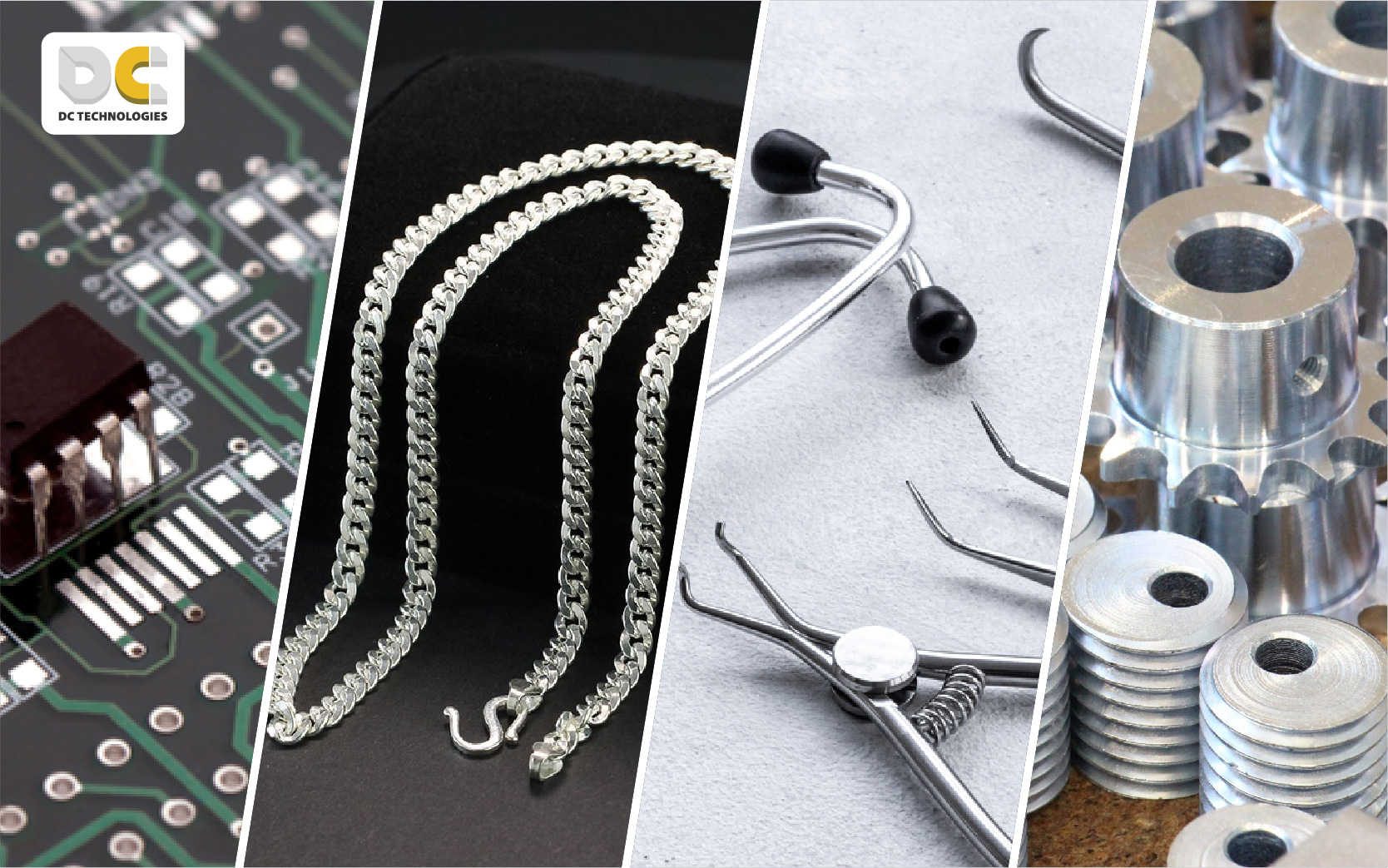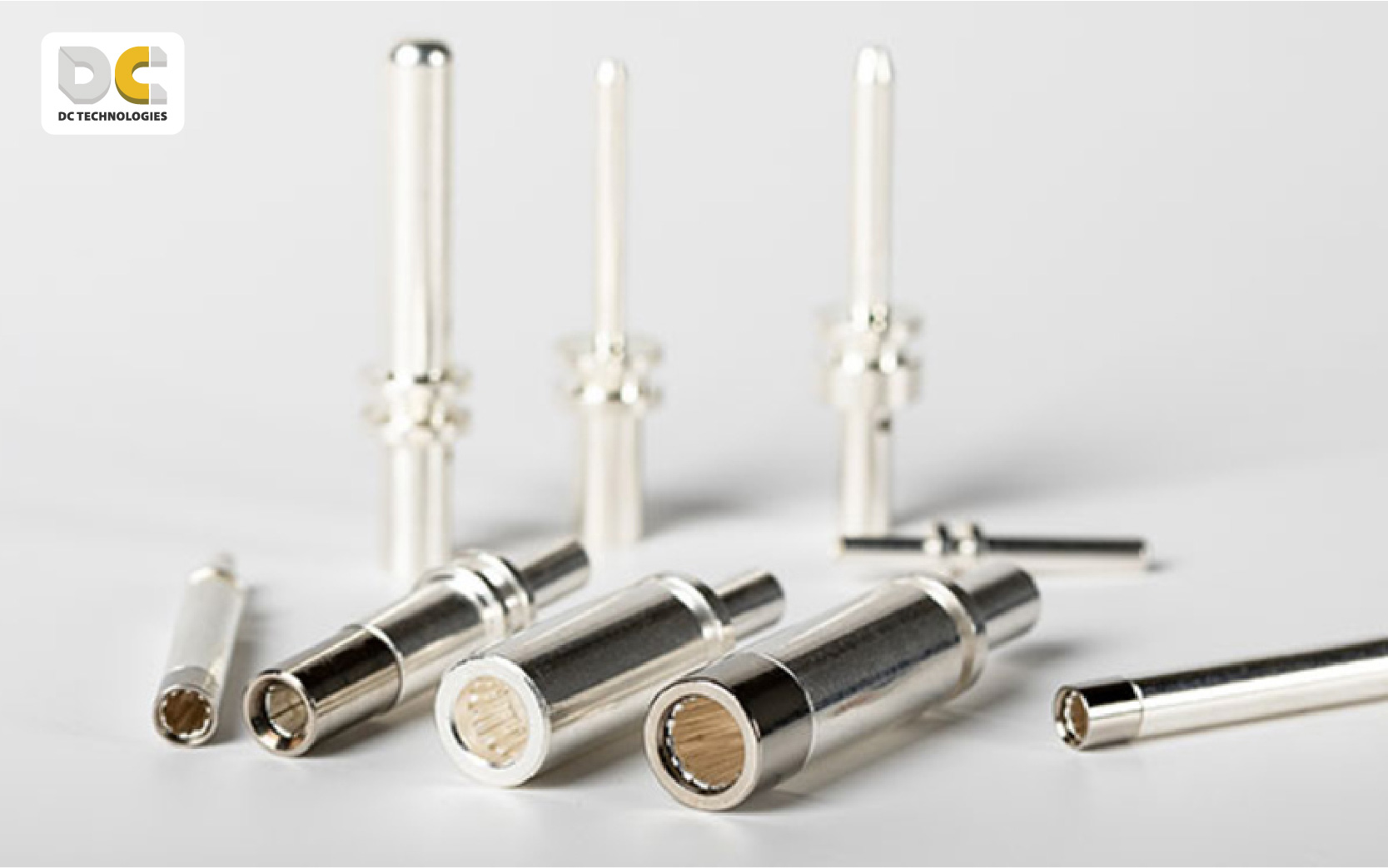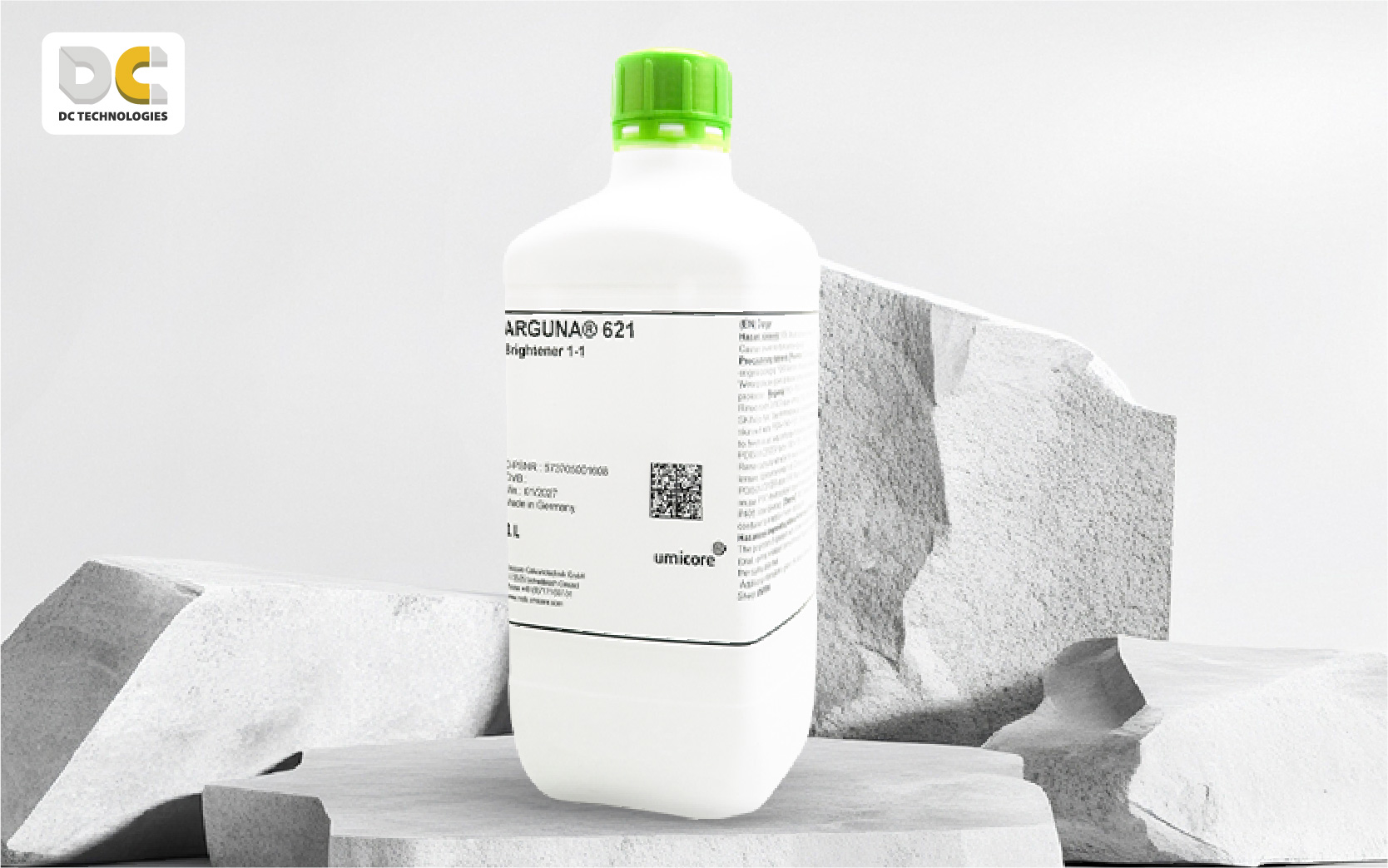Chia sẻ kinh nghiệm
What is Silver Electroplating Chemical? Applications in Industry
Silver electroplating chemicals are an essential solution in today’s industrial landscape, where the demand for durable, highly conductive, and aesthetically pleasing products is constantly rising. A silver coating not only brings a luxurious shine but also enhances oxidation resistance, electrical and thermal conductivity, while protecting surfaces from environmental impacts. The decisive factor behind the quality of the plating layer is the silver electroplating chemical. So, what exactly is silver plating chemical, what are its outstanding features, and how is it applied in industry? Let’s explore with DC Technologies in this article.
I. Overview of Silver Electroplating

1. What is silver plating?
Silver plating is the process of depositing a thin layer of silver onto the surface of another metal (such as copper, brass, nickel, steel, etc.) through electrolysis. This silver layer enhances brightness, improves electrical conductivity, prevents corrosion, and increases the product’s aesthetic value.
2. History and development of silver plating technology
Silver plating technology has existed for centuries, originally used in jewelry making to create shiny decorative layers. During the Industrial Revolution, silver plating became widely applied in the electrical and electronics industry thanks to silver’s superior conductivity. Today, with advances in technology, silver plating solutions have become more diverse and environmentally friendly, ensuring high efficiency while reducing silver consumption.
3. Why is silver preferred in industry and jewelry?
Silver has many outstanding physical and chemical properties:
The highest electrical and thermal conductivity among all metals.
Excellent light reflectivity, producing a bright, luxurious appearance.
Strong oxidation and corrosion resistance when properly processed and protected.
Natural antibacterial ability, making it applicable in the medical field.
These properties make silver the top choice in both high-tech industries and fine jewelry manufacturing.
II. Silver Plating Chemicals and Key Characteristics

1. Basic components of silver plating solution
A high-quality silver electroplating solution typically includes:
Silver salts: the main source of silver ions for deposition.
Complexing agents: stabilize silver ions in the solution.
Brighteners: improve smoothness and luster of the silver layer.
Stabilizers: maintain solution stability and prolong shelf life.
2. Factors affecting silver plating quality
Chemical concentration: determines thickness and durability of the coating.
Current density: too high or too low affects adhesion quality.
pH level: must be controlled within a set range for stable performance.
Temperature: regulates deposition rate and brightness of the silver layer.
3. Characteristics compared with gold plating and rhodium plating
Compared with gold plating: silver plating is more affordable and provides better conductivity but is less color-stable.
Compared with rhodium plating: silver has a more natural brightness, while rhodium offers superior durability and scratch resistance.
Silver’s key advantage: optimal for electronics thanks to its unmatched conductivity.
III. Types of Silver Plating Chemicals on the Market
1. Traditional cyanide-based silver plating
This is the oldest silver plating technology, using silver cyanide salts as the main component.
Advantages: Produces thick, durable coatings with strong adhesion and high wear resistance. Cyanide-based plating often results in even, defect-free surfaces.
Disadvantages: Cyanide is highly toxic, posing risks to workers and the environment if not handled properly. Modern trends are shifting towards safer alternatives.
2. Cyanide-free silver plating
An eco-friendly, human-safe solution that replaces cyanide in plating baths.
Advantages: Reduces toxic risks, safeguards workers, and minimizes environmental impact.
Applications: Increasingly adopted in electronics, jewelry, and high-tech industries; considered a sustainable solution encouraged worldwide.
3. Technical silver plating (electronics, medical applications)
Tailored chemicals for high-precision and performance requirements.
Features: Creates thin, smooth, uniform coatings with excellent conductivity, strong oxidation resistance, and durability under extreme conditions.
Applications: Silver plating for electronic components, connectors, printed circuit boards (PCBs), medical instruments, and aerospace devices.
4. Decorative silver plating for jewelry and handicrafts
Specialized solutions designed for aesthetics.
Features: Contain brighteners and stabilizers to produce glossy, long-lasting, white-silver coatings.
Applications: Widely used in rings, necklaces, bracelets, earrings, watches, and premium giftware. Enhances beauty while ensuring oxidation resistance.
IV. Practical Applications of Silver Plating

1. In the electrical and electronics industry
Silver plating is most extensively applied here due to silver’s conductivity.
Contacts, sockets, conductors: Silver coatings reduce contact resistance, enhance efficiency, and prevent overheating. Used in sockets, switches, and high-voltage breakers.
PCBs: Silver plating improves conductivity and ensures signal stability in modern electronics.
Benefits: Enhances reliability, reduces energy loss, and extends device lifespan, especially in high-tech equipment.
2. In jewelry and fine arts
Aesthetics: Silver’s natural brightness creates elegant beauty, comparable to platinum when polished, at a much lower cost.
Versatility: Bonds easily with various base materials like copper, alloys, and stainless steel, allowing diverse designs.
Value: Popular for its balance of affordability and elegance, making it a preferred choice for both youth and luxury gifts.
3. In high-tech industries (automotive, aerospace, medical)
Automotive & aerospace: Applied on engine parts, sensors, and electrical devices to improve performance under extreme conditions.
Medical: Silver plating in surgical instruments and implants takes advantage of its antibacterial and corrosion-resistant properties.
4. Common products using silver plating
Jewelry & handicrafts: rings, necklaces, bracelets, watches, luxury gifts.
Electronics: PCBs, connectors, terminals.
High-end industrial components: automotive engines, aerospace equipment, medical devices.
V. Trusted Silver Plating Chemical Suppliers in Vietnam

1. Criteria for choosing a supplier
Certified products: Must be genuine, internationally certified (RoHS, REACH) for export markets.
Technical support: A reliable supplier provides consultation, training, and troubleshooting.
Professional after-sales service: Warranty policies, quality commitments, and long-term cooperation.
2. DC Technologies – Official distributor in Vietnam
Experience: With over 25 years in jewelry and plating industries, DC Technologies is a trusted partner for thousands of businesses nationwide.
International partnerships: Official distributor of world-leading silver plating chemical brands such as Umicore (Belgium).
Quality commitment: Directly imported, genuine, quality-tested products with transparent certifications.
Expert team: Skilled engineers and technical specialists support clients in product selection, process optimization, and troubleshooting.
3. Product lines distributed by DC Technologies
Arguna 621: High-quality silver plating solution for versatile industrial use, offering durable, bright, and conductive coatings.
Arguna ET-S: Ultra-pure silver plating chemical specialized for electronics and microelectronics, ensuring optimal conductivity.
Arguna CF: Designed for jewelry and handicrafts, producing bright, long-lasting silver finishes with premium aesthetics.
With a nationwide distribution system, stable supply, and advanced technical support, DC Technologies has become the trusted choice of both domestic and international manufacturers.
Conclusion
Silver electroplating chemicals play a crucial role in producing high-quality industrial and jewelry products. From shiny jewelry coatings to ultra-thin layers on PCBs, silver plating proves its broad applications and economic value.
In the modern manufacturing trend, businesses need to select eco-friendly, internationally certified silver plating chemicals to ensure performance and brand reputation.
In Vietnam, with DC Technologies as the official distributor of genuine silver plating chemicals, enterprises can confidently access advanced solutions that meet the strict demands of both domestic and global markets.
